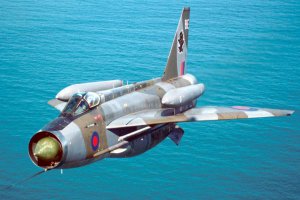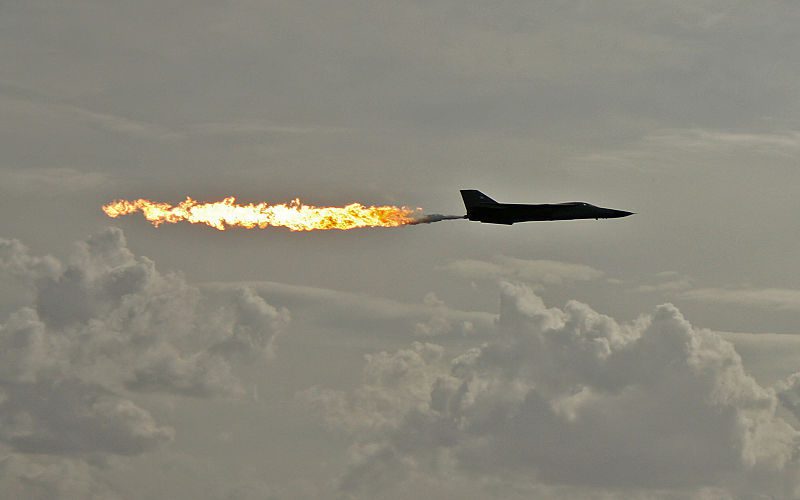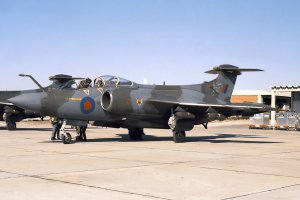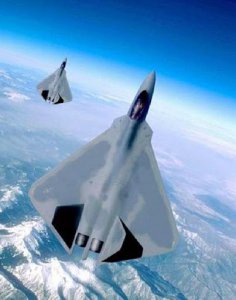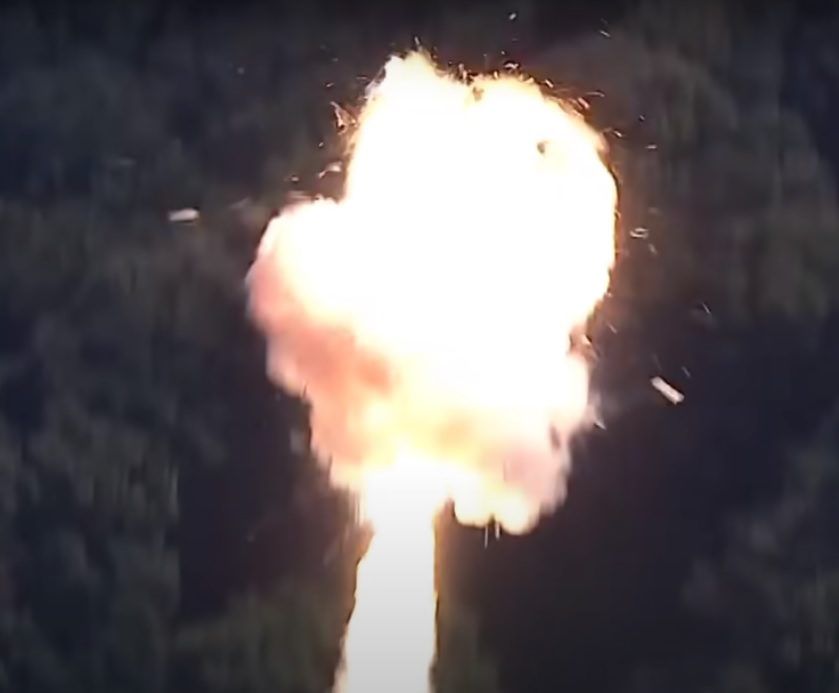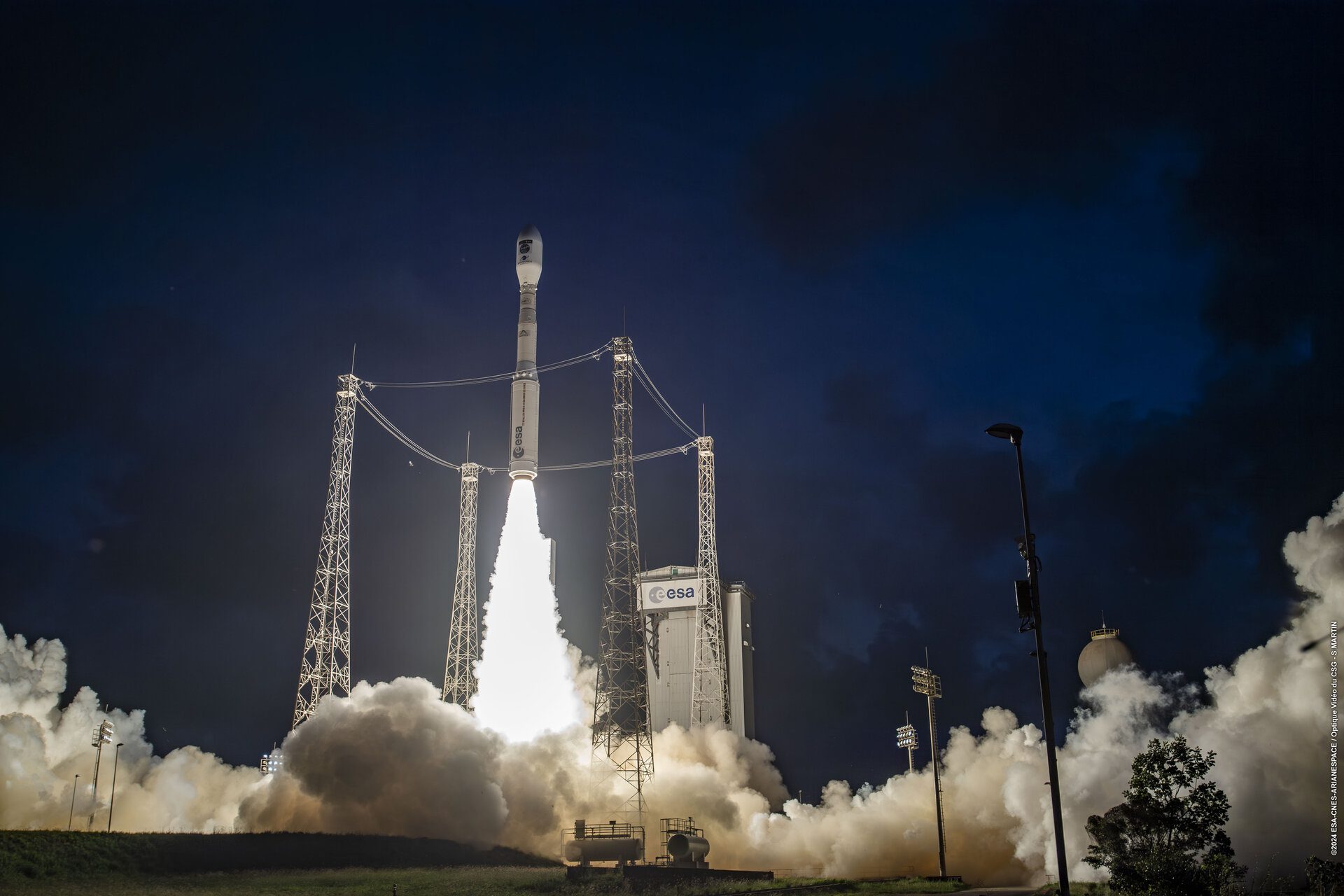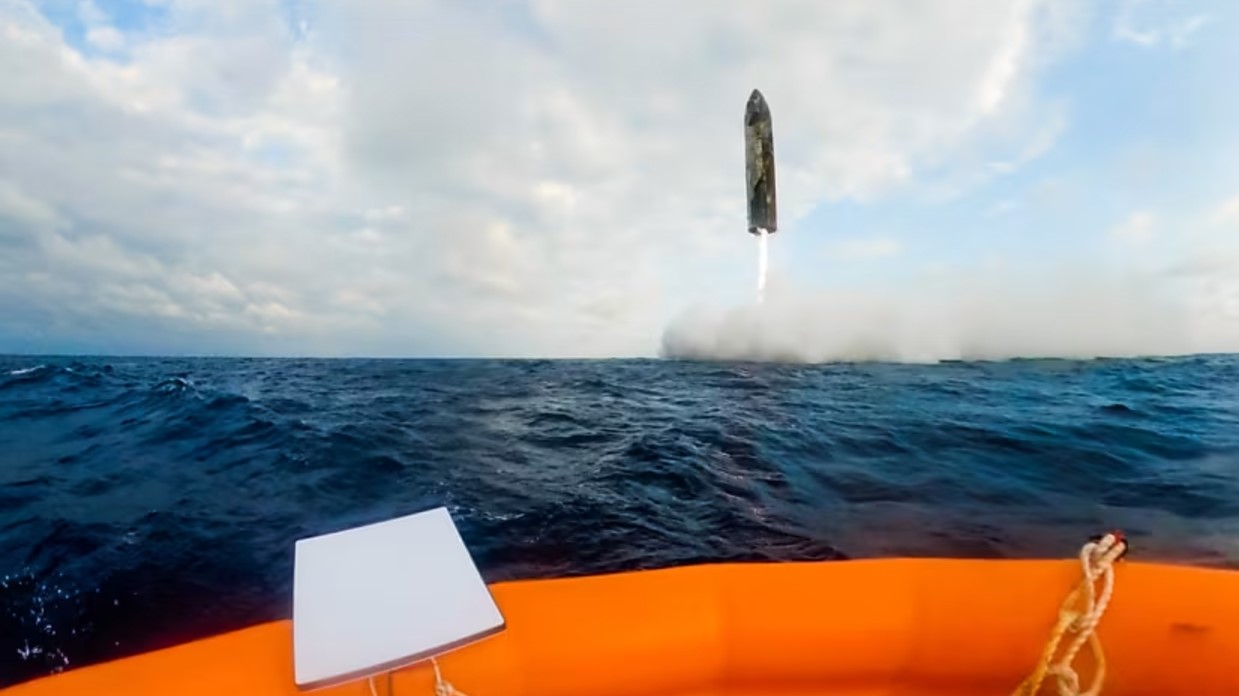When you are a teenage youngster you have big dreams. In between wishing for, but sadly never getting, the (slightly older) girl next door, and wanting a James Bond-like Lotus Esprit sports car, your then keen young correspondent also had dreams about walking on the Moon, and flying his own supersonic jet. While the lunar astronaut dream is still a little out of reach for most (although that might soon change if Elon Musk et al does the business), for all those other super-rich types out there, the latter remains a surprisingly realistic option.
For while supersonic biz-jets have yet to arrive on the market, there is already an active market in the buying and selling of ex-Cold War supersonic fighter jets. In fact, non-flying examples can be picked up for US$30,000 or less including an ex-West German Luftwaffe F-104 Starfighter “garden ornament”, which was for sale a few years ago.
For those that actually want a working one, the going rate at the moment for is around US$100,000-250,000. There are lots of supersonic fighters about, especially the Mig-21. It became the most-produced jet aircraft ever with a run of 11,500, plus another 2,000 or so Chinese J-7 copies. At the time of writing, there were a couple of the Soviet-built simple, but fast and agile, Mig-21 jets for sale on the internet – both in two-seat trainer configurations. By the way, under NATO’s codename system (F-for fighter, two syllable codename for jet) Mig-21 in its various versions received the not-so-hot codename “Fishbed”.
With so many about, it was not surprising that Mig-21 Fishbeds were often used in proxy wars during the Cold War era, seeing action in the Six-Day-War and Vietnam in the 1960s. They are still in action today as Syria continues to use them as light bombers, while few upgraded examples remain in the hands of the Indian Air Force as they face the old enemy Pakistan, which by the way, also fields several 50-year-old Mirage III jets sourced from several previous owner nations.
These old supersonic jet fighters might be long in the tooth, but both the Mig-21 and Mirage III have enough performance and agility to be used as lightweight fighter-bombers, with new avionics and modern missiles helping to somewhat make up their performance shortfalls against more modern jets. For Pakistan, Mirage III have an important role as their stand-off attack missile delivery aircraft – a role that the nation’s more advanced US built F-16’s are banned from in their export agreement.
(Update in May 2019: During an air battle/skirmish over Kashmir in February 2019, an Indian Mig-21 was shot down by a more modern Pakistani F-16, but only after the Mig-21 in question shot down another Pakistani F-16 – although this claim has since been strongly denied by Pakistan and the evidence for it is weak).
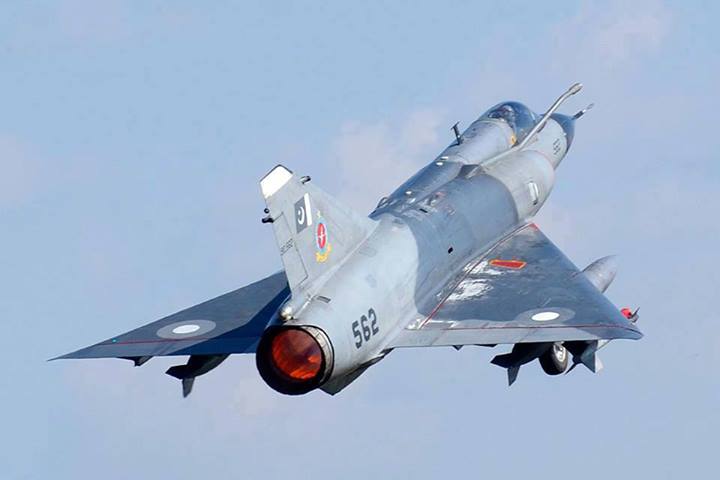
Pakistan upgraded former Royal Australian Air Force Mirage IIIO fighters under its Rose programme. Courtesy: Pakistani Air Force Via ADF-Serials.com
Alternatively, for those with a Swedish bent, you could go for the beautiful (from certain angles) double delta Saab J-35 Draken. Despite never having fired a shot in anger, the fast and manoeuvrable Draken is rated by pilots and experts as possibly the best fighter jet of its generation – especially once its duff slow-to-initiate AIM-4 Falcon missiles were dropped in favour of the better ready-to-go heat-seeking AIM-9 Sidewinders. Its radar was also one of the best there was. The only issue was that unwary pilots could “super-stall” it.
Both the Draken and the Mig-21s mentioned are being sold in flyable and clean condition and all are capable of Mach 2 albeit at certain altitudes and only in short bursts as the fuel quickly runs out at those speeds. However, if you are keen to pilot a Draken, you might need to know how to fly one first as the one for sale at the time of writing only had a single seat.
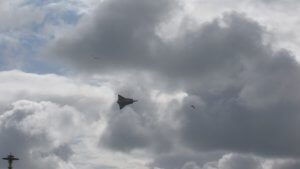
Space-age-like Swedish Saab Draken supersonic fighter jet fighter tangles with a seagull over St. Heller in Jersey Image: Seradata/David Todd
Of course, the cash drain does not end with the purchase of one of these jets. The cost of operating such aircraft can run into thousands of dollars per flight hour.
So what do you do with it once you have one of these expensive-to-run bi-sonic beasts? Well you could fly it – but only in certain places. While subsonic war birds are allowed to fly in the UK, since the recent fatal Hawker Hunter crash at the Shoreham Air Show in England, these flights have become much more restricted. As it is, for safety reasons the Civil Aviation Authority does not license supersonic types, nor is the Royal Air Force too keen on anyone having Mach 2 hardware that might just outrun their own modern-day Typhoon interceptors. Having said that, you can still fly jet fighters relatively easily in the USA and, even fly them at supersonic speeds at certain test ranges.
Apart from flying them and admiring them, there is, of course, one other alternative use for such fast hardware. They can be used as the “Stage Zero” carrying aircraft for an air-dropped launch vehicle.
The air launch concept dates back to 1958 when a subsonic US Navy F4D jet made a series of attempts to orbit a small satellite launch vehicle from its bat-winged underside. None of the Project NOTS spacecraft were ever confirmed as having been orbited.
The air launched rocket concept was revisited in the 1980s, albeit to shoot at spacecraft, rather than actually launch them. A F-15A was used to test-fire a suborbital solid rocket ASM-135 anti-satellite missile in September 1985. The missile struck and destroyed the SOLWIND satellite.
But that was then and now an outfit is actively revisiting the idea of actually launching space vehicles from a fighter jet. This is the aptly named Starfighters Aerospace which is developing a new launch vehicle with Embry Riddle University, to be launched by a Lockheed F-104S Starfighter supersonic jet fighter. The idea is, in this way, to produce a cost-effective orbital and suborbital payload launcher to service the needs of nano-satellite payloads.
Starfighters Inc originally decided to acquire its own ex-Canadian/Norwegian air force F-104 Starflighter fleet initially for other uses, including mimicking missiles (well the aircraft was always known as “the missile with a man in it”) and for microgravity science parabolic flights. Later the firm acquired the ex-Italian Air Force F-104S version. These will be the ones used for the launches as they have a heavier take-off weight thanks to being designed to launch heavy semi-active radar AIM-7 Sparrow/Apside missiles, in addition to the lighter “heat-seeker” AIM-9 Sidewinder types originally carried by the earlier F-104 Starfighter variants.
The F-104 Starfighter, while a fantastic performer in terms of climb and acceleration, it was never really rated as a fighter jet mainly because it turned so badly. As such, it was relatively easy for the more agile Soviet-built Mig-21 Fishbed to shoot down. For example, four Pakistani Air Force Starfighters were shot down by Indian Air Force Mig-21s for no loss in the Indian-Pakistan confrontation of 1971.
The Starfighter also had a very poor safety record. Even escape from the jet was hazardous since early examples were fitted with downward-firing ejection seats, due to concerns that the early upward ejection seats could hit the tail. Thus, it was not surprising that the US Air Force soon got rid of them.
Nevertheless, they sold well to nations around the world (some 2,500 were built), even if some of these sales were partly down to bribery and corruption. Actually, the F-104 Starfighter was capable of being used as a fighter to engage other aircraft – just so long as a pilot played it to its strengths and stuck to manoeuvring in the vertical plane. Eventually, however, age caught up with it and the obsolete Starfighter had to be replaced by the air forces that used it. This time they saw the light and went for fast AND manoeuvrable types such as the F-16 and Eurofighter Typhoon.
Having noted its weaknesses, the F-104 did actually have some strengths: it was very fast in a straight line at low level, making it a good tactical strike bomber and reconnaissance aircraft.
And, as already mentioned, was very good at accelerating and had a world-beating rate of climb (only the English Electric Lightning could compete with it – well until the F-15 and F-16 came along). Early Mach 2-capable F-104A Starfighter examples were even used in a series of zoom climb tests augmented with thrust from an extra rocket.
Italy was the last official air force user of the Starfighter, retiring its F-104S Starfighter fleet in 2004 – some of which were acquired by Starfighters Inc.
With its excellent rate of climb, the F-104S Starfighter looks like a good choice for a “stage zero” launch aircraft, as long as the rocket stage drop-off is in the very thin part of the atmosphere to ensure an easy and stable stage separation. The payload to a typical sun-synchronous low Earth orbit for the proposed Starfighter/launcher combination is expected to be around 20 kg.
With its “space age” sleek looks, it is apt that the Starfighter already had some previous space connections. NASA used them until 1994 as a fleet of fast chase planes. Meanwhile, the Starfighter actually appeared in an episode of the original science fiction TV series, Star Trek, when a US Air Force Starfighter pilot tried to intercept the USS Enterprise (see it try here) which had unintentionally both both gone back in time and had also fallen into Earth’s atmosphere. The US Air Force pilot had to beamed aboard before his F-104A mount broke up under the stress of the Enterprise’s tractor beam.
As such, it is nice to see that the space age F-104 Starfighter may now also have a real life “starring role” in space exploration.
Of course, not to be outdone on the space front, others are planning a similar role for Starfighter’s Cold War nemesis, the Mig-21, which, as already noted, is still used by some air forces, and which outlasted its fast, but less manoeuvrable, Mig-23 successor.
One word of caution for those thinking about using such supersonic fighter jet aircraft for air-launched orbital rocket launches. Previous launch concepts using fighter jets have usually ended in tears. The DARPA ALASA project is just the latest example of such a project failure. Its plan to launch/air-drop a small canted nozzle launch vehicle from the underside of an F-15 (a 1970s fighter design that finally matched the Starfighter’s rate of climb) came to an end after some ground test explosions. DARPA then realised that using pre-mixed propellants in the unmanned rocket was far too dangerous for a manned carrier aircraft to carry.
Nevertheless, the use of an F-15A for such air launches to space – even if as an interceptor missile – has been proven. And the Starfighter Inc plan really does look likely to work.
Post Script: So which was the best fighter in the 1960s?
This writer rates the Saab Draken as the best – it had the excellent Avon engine which gave it excellent climb, good speed and it had internal gun(s). It had the original “Cobra” pitch up manoeuvre albeit as a quick fix to its “super stall” weakness. However, to take the title of best of the 1960s generation of bi-sonic jet fighters, the Draken has to contend with some very famous jets. For in addition to the agile Mig-21 (by the way, Finnish pilots who flew both the Draken and the Mig-21 rated the Draken as slightly better mainly because of its radar). But in the right hands the Mig-21 could then beat any fighter at close range – provided its limited fuel did not run out. It was often pilot quality which sometimes let its reputation down.
There was of course, the excellent Western-built battle-proven threesome: the Mirage III, the F-8 Crusader, and the jack-of-all-trades F-4 Phantom II.
Good as it was (especially in expert Israeli pilots’ hands), the Mirage III actually did not have a very good radar while its Atar-9C engine lacked power in certain climates. Australia prototyped a Rolls Royce Avon engine version which dramatically increased the Mirage’s rate of climb, acceleration and fuel economy, but cost got in the way. As it was, Snecma was promising a new more powerful ATAR – the -9K version – to match the Avon. But, in the end, this wasn’t fitted to the Aussie version either.
The F-8 Crusader was an excellent machine – as was demonstrated by its Mig kills in Vietnam – with very good internal fuel amount and internal guns – even if they were unreliable. It was only let down by its not quite bi-sonic performance (it could get to Mach 1.85). This is not really important for most combat except when trying to intercept enemy Mach 2 capable reconnaissance jets.
There was also, of course, the theoretically better performing F-104 Starfighter and BAC/English Electric Lightning to contend with. While their sheer performance was not beaten until the F-15 and F-16 turned up, they both had significant weaknesses. The former could not turn very well – so does not make the grade, while the latter’s much faster fuel exhaustion rate (worse than even the thirsty Mig-21) along with its twin engine operating costs, remained its Achilles heels. By the way, both also became infamous for their high accident rates. Mind you, so did the Draken via its super-stall affliction. Meanwhile, Australia lost about 40 percent of its Mirage fleet to crashes. All that era’s jets seem to crash regularly.
Interestingly, the designers of both the Mig-21 and F-4 Phantom (and the middle variants of the English Electric Lightning) did away with their internal guns until they realised that this was a premature move as missiles were underperforming and had minimum range limitations. External gun-packs provided a temporary, if sometimes draggy solution until internal guns were restored on later variants. Nevertheless, by the 1970s most air-to-air kills were being achieved by missiles – both infra-red seekers like the US AIM-9 Sidewinder (and its Soviet copies) and semi-active radar seeker types like the US AIM-7 Sparrow.
By the way, semi-active radar-guided missiles like the Sparrow which would have theoretically given aircraft like F-4 Phantom II a much better theoretical missile reach turned out to be very poor in reality. The lack of reliable fighter jet IFF (Interrogation Friend or Foe) systems at the time virtually prohibited beyond visual range use of the Sparrow, plus the fact in those days their lack of seeker and agility performance meant they would only hit the target about 10 per cent of the time. It was for this reason that the famed Israeli air force generally preferred to shoot down their enemies with Sidewinders or their own home brew heat-seeking missiles.
Actually, it was not until the mid-1980s when Sparrow missiles caught up with British Skyflash – a Sparrow close copy developed in the late 1970s – with their inverse mono-pulse seeker technology. This significant improvement, along with sophisticated aircraft passive identification systems, finally made the late mark Sparrow very effective. These proved their worth on F-15 jets in the first Gulf War of 1990-91 with their kill rate of above 50 per cent. However, their long-awaited success was actually the Sparrow missile family’s swansong as it was soon replaced by the active radar-seeking AMRAAM.
Your correspondent’s personal ranking for the best 1960s fighter jets is as follows:
- Saab Draken (Agile, good climber with Avon engine, good radar, gun(s) aboard. Had scary super-stall. Never got to prove itself in action)
- Mig-21 (Agile, fast acceleration, but very short of fuel. Foolishly gunless after initial version, so variants with gun-pods were best e.g. the Indian FL ones. Later blown flaps better for landings)
- Dassault Mirage III (Weak climb without rocket, good instantaneous turn but bleeds speed if carried on with, good gunfighter. Might have been No 1 if Australians had chosen Avon engine)
- Vought F-8 Crusader (Good dogfighter. Had internal guns (if unreliable ones), lots of internal fuel but lacked external tanks. Not quite Mach 2 capable)
- BAC/English Electric Lightning (Best for speed/climb, agile, but complexity, poor endurance and high running cost demotes it)
Out of the running is the Starfighter. As already mentioned, the missile-like climb and very-fast-in-a-straight line speed of the F-104 Starfighter made it an excellent low level strike/reconnaissance jet, but i was a turkey in a turning dogfight, even if it vies with the Mirage III as the best looking fighter in its shiny bare-metal finish. Mind you, as Vietnam’s Mig-21 pilots found out, shiny aluminium tended to glint in the sunlight, giving a jet’s position away. While it also does not make the top five, a special mention goes to the “Jack-of-all-Trades” the Mach 2-capable F-4 Phantom as it was easily the best multi-role “fighter-bomber” warplane of the era – especially in the RAF’s Spey engine FGR-2 guise with its good range and lots of power at low level.
However, the F-4, even in its faster at high level J79-powered original form, was still a little unwieldy in a dogfight, even if its pair of J79 engines could often power it out of trouble. However, once its Sparrow or Skyflash semi-active radar guided missiles were finally perfected in the 1980s it became a very effective Beyond Visual Range (BVR) interceptor fighter. The RAF’s late-bought F-4J (UK) J79- powered ones were better even than the initial examples of Tornado F-3 which replaced it – well, until the latter’s faults were fixed. Even better were the internal gun-equipped slat-winged German F-4Fs once they had a F/A-18 AN/APG-65 radar fitted which allowed AMRAAM missiles to be carried.
While jet combat does not usually stay supersonic for long, the nice little F-5 also does not make the cut as it struggled to get to Mach 1.6. Meanwhile, The “Century Fighters” tended to be good at fighting bombers or good at reconnaissance rather than taking down other fighters. For example, although both are capable of Mach 2, the sharp looking but not very agile F-105 Thunderchief is actually a pure fighter-bomber (see below) while the F-106 Delta Dart is more of a bomber interceptor rather than an agile dog fighter. Meanwhile, the F-101 Voodoo was quite fast (Mach 1.7) in a straight line, although like the F-104, not very manoeuvrable, but it had excellent range making it an ideal reconnaissance plane.
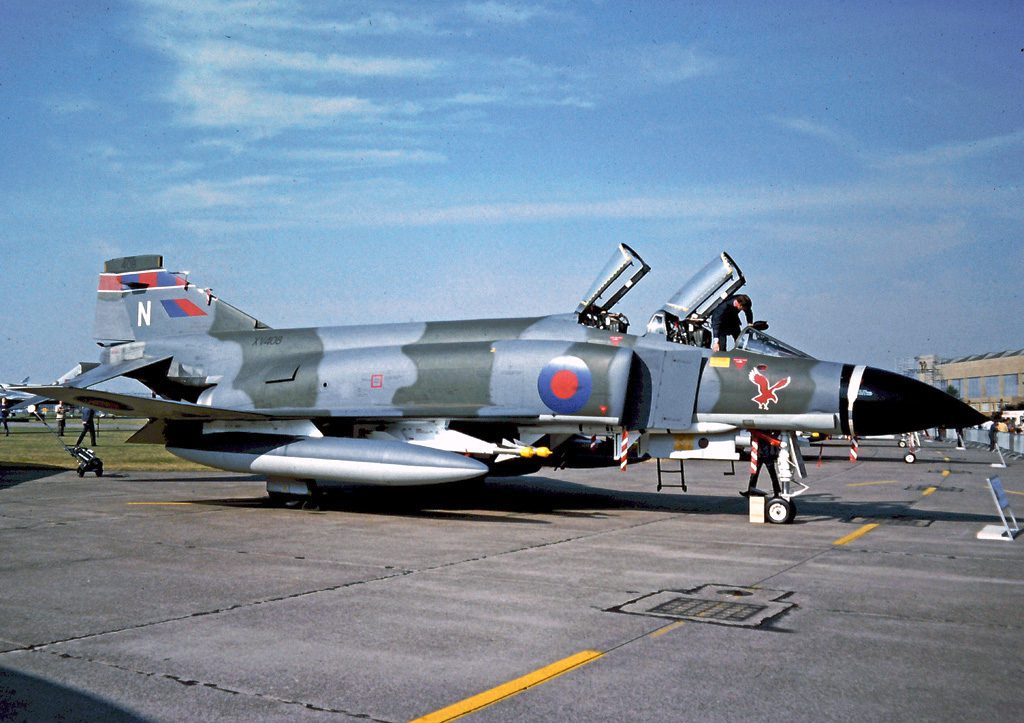
The RAF’s F-4M (FGR-2) was powered by Spey turbofans which were more powerful and fuel efficient that J79 turbojets. But J79s were more responsive and were less draggy in their fitment making them better at high level. Courtesy: Wikipedia
By the way, while its 1970s paint schemes were normally a more boring all over green, the space age-looking double-delta shaped Draken also has claims for the title of best looking jet here. On the subject of colours, after its bare metal days, the RAF had a quite a nice battle camouflage scheme especially once its original dark sea grey/dark green appeared to morph to more of a medium sea grey/dark green (see the Lightning image above). That said, in the 1980s the RAF jets soon moved towards “air defence” all-over greys, or local area low visibility colours e.g. desert sand or pink colours for Gulf operations.
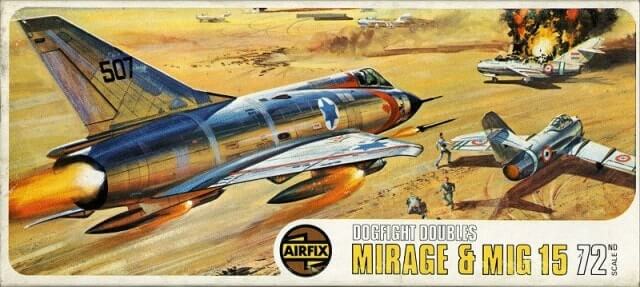
Airfix kit box art depicts a beautiful Mirage IIIC (CJ) attacking a Mig-15 during the six-day war. Courtesy: Airfix
Addendum: So which was the best strike jet of the 1960s’ period?
While jets like the F-4 Phantom and the Mirage III and their contemporaries were turned into tactical bombers, specialist strike jets could normally outperform them for payload and range – even if this has not prevented the more economical multi-role jet concept from flourishing since.
In our comparison, we are however eschewing long range heavy bombers such as the B-52 and Vulcan as not being agile enough to quickly fly down valleys at low level – important in that pre-stealth age. The same goes for strike bombers such as the Vautour and Canberra which were really 1950s types getting a bit long-in-the-tooth.
Also excluded from the shortlist was the fast-looking A-5 Vigilante supersonic jet which had a bizarre tube-like bomb-bay. It briefly served as a carrier-borne Mach 2-capable nuclear bomber for the US Navy before becoming a much better Mach 2 reconnaissance jet. The Vigilante was actually considered by Australia before it wisely went for the F-111 – even if it had to wait until the early 1970s to get them. Surprisingly, Soviet Union also does not make the cut as it did not have any strike jets with a decent enough range at the time. That said, it made amends a few years later when it introduced the very good F-111-like Sukhoi Su-24.
Your correspondent’s personal ranking for the best 1960s’ strike bomber is thus as follows:
- F-111 (Teething troubles made it late & expensive but swing wings gave it both good range and supersonic dash speed)
- Buccaneer (Best on cost/effectiveness but beaten by F-111’s all-weather terrain following radar & speed – though internal bomb bay makes Bucc v.fast at low level)
- A-6 Intruder (Subsonic but had good all weather avionics, if not quite as much range as the pair above).
- Mirage IV (Supersonic lovely looker but lacked range without in-flight refueling & had no bomb bay).
- F-105 Thunderchief (Supersonic good tactical bomber but range deficient & had no internal bomb bay).
So the F-111 was the best and is still missed by those nations (USA and Australia) who used it well but which have since retired it on operational cost grounds. Its main replacements, the F-15E and the F/A-18E/F, just don’t have the equivalent range.
Likewise, the Buccaneer S2 is also very much missed by its users. In fact it was better than just a poor-man’s F-111. It was only about a quarter of the F-111’s price, but it had pretty much the same maximum operational strike radius at 1,150 miles – albeit that 600-700 miles was the more normal full weapon load distance. And while it lacked F-111’s all weather avionics including its terrain following radar, it was actually a tad more agile at getting itself down twisty valleys. As for not having a supersonic dash speed (this was a cancelled upgrade), actually the Buccaneer was usually faster at low level than most supersonic fighters anyway. It was a shame that more nations did not buy the excellent Buccaneer, but you can partly blame the Lockheed Starfighter bribery scandal for that.
By the way, the Tornado, which was Europe’s eventual answer to the F-111 and the successor to the Buccaneer, good as it was, was actually not quite as good as either in terms of operational range, although it did at least have up-to-date avionics.
So overall then, the best equipment that a medium-sized Western air force could use during the mid-to-late 1960s was probably the Saab Draken as a fighter, and the F-111 or Buccaneer as a strike jet.
The Royal Australian and the South African Air Forces probably came closest to having the best equipment for the time. Both used the good third Place Mirage III as their fighter choice (which would have been even better if they had gone for the more expensive but better performing Avon engine) and had the excellent F-111C and Buccaneer as their respective long-range bombing machines. Although in reality Australia had to wait until the 1970s for its F-111C to be ready.
Late in the 1960s UK’s Royal Air Force (RAF) found itself with the pretty good fighter pair of the F-4 Phantom and Lightning, with each covering for each other’s weaknesses: the F-4 Phantom’s lack of agility and the Lightning’s lack of endurance and missile punch. While the pair were initially replaced by the Tornado F3 which eventually became an effective long range interceptor – if not so good dogfighter – the RAF finally achieved both in a single fighter jet three decades later with the Eurofighter Typhoon. Mind you, the US Air Force had already managed both attributes by the 1980s with the F-15 and with later versions of the F-16.
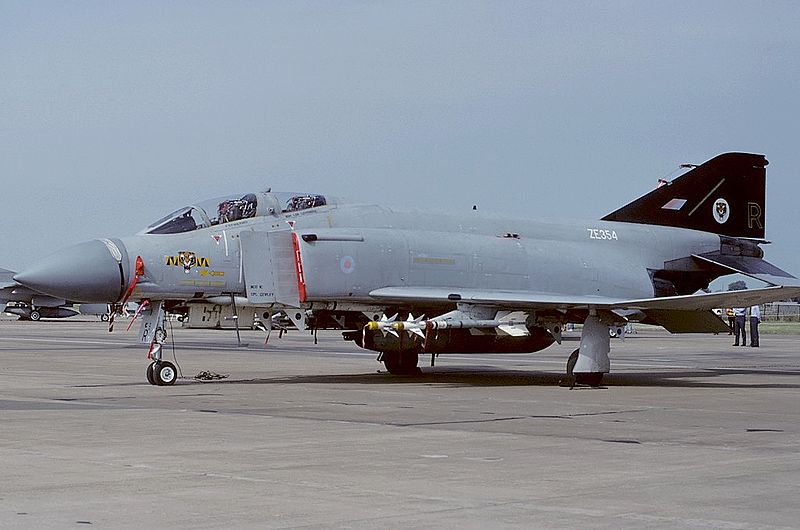
Bristling with Skyflash and AIM-9L Sidewinder missiles and a 20mm Vulcan cannon pod, the J-79 powered F-4J (UK) was a late addition to the RAF’s Phantom fleet to make up for its Spey-engined stablemates sent to guard the Falklands. Courtesy: RAF/Wikipedia
However, the RAF did, at least, have the excellent Buccaneer as its strike jet which was just about as good as an F-111 and which was very much cheaper. While the RAF originally wanted the cancelled supersonic TSR-2, and the by-then too-expensive F-111, once it got its hands on the Buccaneer (from the Royal Navy), it belatedly realised just how good a strike jet it was. The Buccaneer even saw “action” in RAF colours by helping out laser targeting bomb drops by its supposed successor, the Tornado, in the First Gulf War. It even got to drop some actual bombs itself.
Sometimes bombs were not even needed to show off the Buccaneer’s power. In 1983, a brace of RAF Buccaneers loudly “buzzed” the city of Beirut a few times in the famous “Operation Pulsator” low-level mission to show potential assailants of UK forces there what they faced if they did. A decade before that a pair of Buccaneers, then in Royal Navy colours, was used to deter a Guatemalan invasion of Belize (then called British Honduras) a decade earlier in 1972 when they made an extreme range “buzz” of Belize City near to the border. This hugely impressive mission included 3,000 mile round trip from the Ark Royal carrier located near to Florida in the Atlantic, employing buddy refuelling from another Buccaneer pair to achieve it.
And finally: With the onset of “stealth” technology and the need to avoid using external weaponry, the multi-role fighter jet concept is becoming less attractive. It can be envisaged that pure fighters and strike fighter bombers will soon be two different classes again. While China is reported to be pursuing this dual aircraft concept of the J-20 and the JH-XX strike jet, the US Air Force, in preferring to fund its long range subsonic B-21 stealth bomber, sadly decided not to go for the stealthy FB-22 strike jet concept to accompany its F-22s.
With its 1,500+ mile strike radius, the F-22 derived FB-22 was, in effect, was a true replacement for the F-111 and the Buccaneer and could soon be needed if new Chinese and Russian very long range air-to-air missiles prove to be effective against tanker aircraft which modern short-ranged fighter jets tend to rely on too much. As it is, while an FB-22 type might not be as agile as a pure fighter jet, modern highly agile active/passive radar and infra-red seeking missiles would still allow it to defend itself.
Post Script 2: After a long-shot bet came off at the bookies, the writer of this article suddenly found himself with the funds to buy an old Lotus Esprit (aka the “poor man’s Ferrari”), if not a supersonic jet. Unfortunately, your correspondent’s mid-life crisis will just have to wait as his wife had other plans for the windfall cash…namely to buy a new boiler for the house. In a compromise deal, it has been decided that a Lotus badge will now be stuck on said new boiler.
Ah well, your correspondent keeps dreaming…

